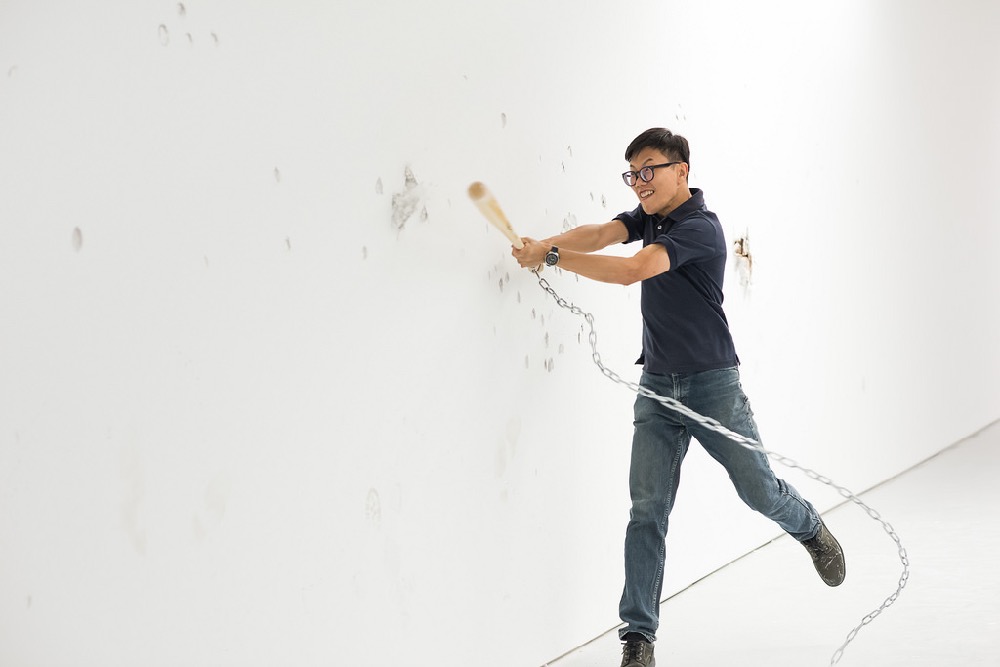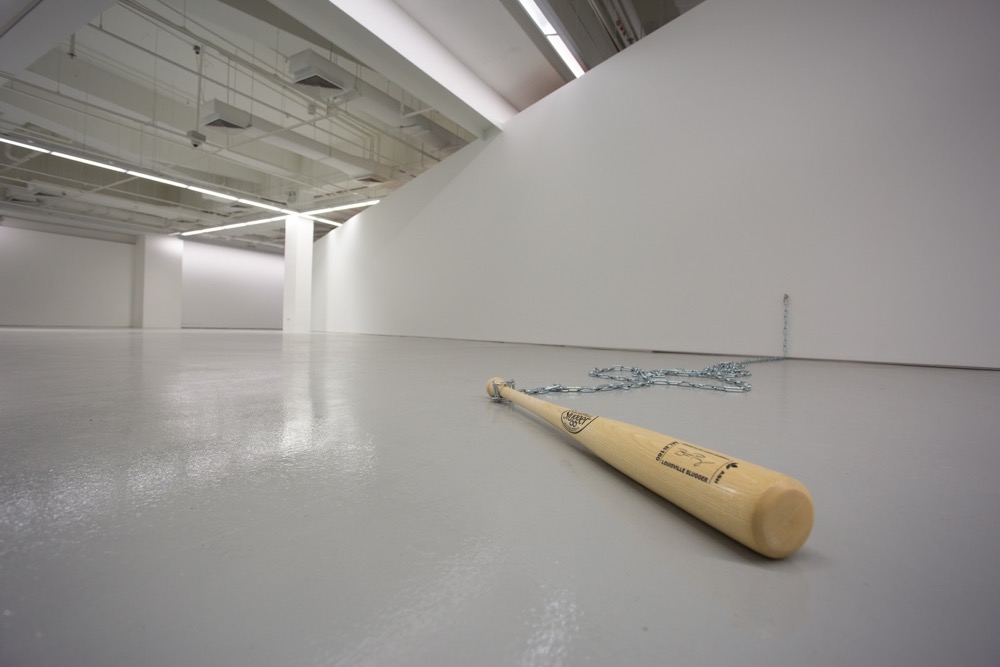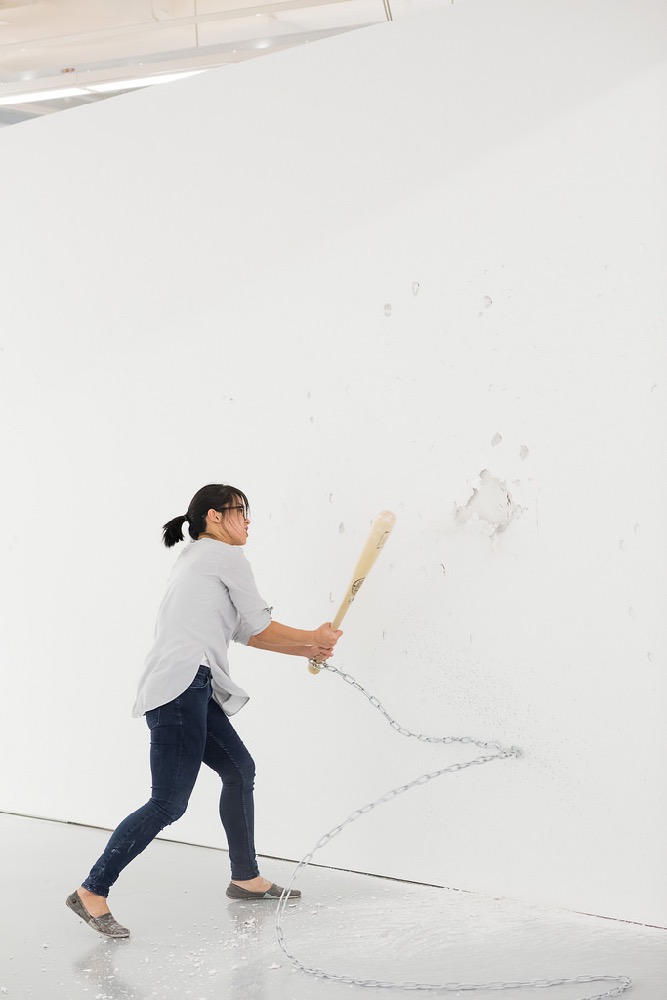Free action
A figurine of Nelson Muntz, Simpsons class bully, stands primed with a baseball bat. This was the exhibition publicity.
The installation followed suit with a new monstrous 40-metre wall diagonally bisecting the entire gallery. At the very back, on the side hidden from the entrance, a baseball bat is chained to the wall. And sure enough, when you take a swing, the sound of the hit is amplified to boom through the gallery. The wall reacts like a drum, with the volume soaking up the violence, even making it seem less.
The second Institute of Contemporary Arts Singapore work was Spectral arrows, Marco Fusinato’s 8-hour noise-guitar-splatter-concrete performance, presented with his back to the audience. The Singapore label Ujikaji Records is to release a recording of the event.
Both these works buy into the tension Fusinato creates in monumentalising and aestheticizing political gestures of ‘action’ or ideological resistance, unnerving connections between action and effect. Fusinato’s works often propose one sense or type of thinking by amping up and intensifying another. Fusinato holds open an ambiguity between the physical realisation and another thing he introduces, which comes from a different world or thinking. He pushes politics into physical expression.
So at the ICA Singapore a potentially symbolic act of inviting visitors to literally tear into a gallery wall is set against the amped-up thunder and comedy of the chain and baseball bat, and an eight-hour intensive noise-Tsunami literally collides with the audience to weed out all but a few.
The attraction in recent sound and electronic artwork is in the potential for new anonymous forms, ‘anonymous’ in the sense that these new forms are shaped in part by conditions that are not contingent upon us, or the artist for instance. Disaffection and disillusionment lead a similar conversation in discourses around contemporary painting and painterly abstraction. Noise is physical and generally unaffected by social objects. But temporal conditions of practice, such as duration or something being done too long, do force through. Situations count as well, as much for the people involved: an underground music scene for the non-workers, get-up-lates and intense types, for instance. Social conditions agitate abstract loops and feedback.
Conditions of practice lead to another sense of thinking about ‘anonymous’ forms. To read Fusinato’s works as aesthetically unassailable, or for their immersive effect alone, would be to overstate, as though ‘aesthetic’ implies a totalising procedure. The poetic in Fusinato’s work has a background and special characterisation in music and with other artists. A particular example would be Gary Wilson, et. al., whose revitalisation of Suprematist structures evolved into something of a shared usage and thinking. Fusinato’s poetic and conceptual precedents give leverage to ‘conditions of practice’ so that it is not necessary to overstate or constantly seek to lock down radical conclusion in place of an expressive moment and action.
Marco Fusinato, Constellations, Institute of Contemporary Arts Singapore, LASALLE College of the Arts, Singapore, 14 August – 29 September 2015.
Marco Fusinato, Spectral arrows, Institute of Contemporary Arts Singapore, LASALLE College of the Arts, Singapore, 30 August 2015, 4:00 pm to 12:00 midnight.


